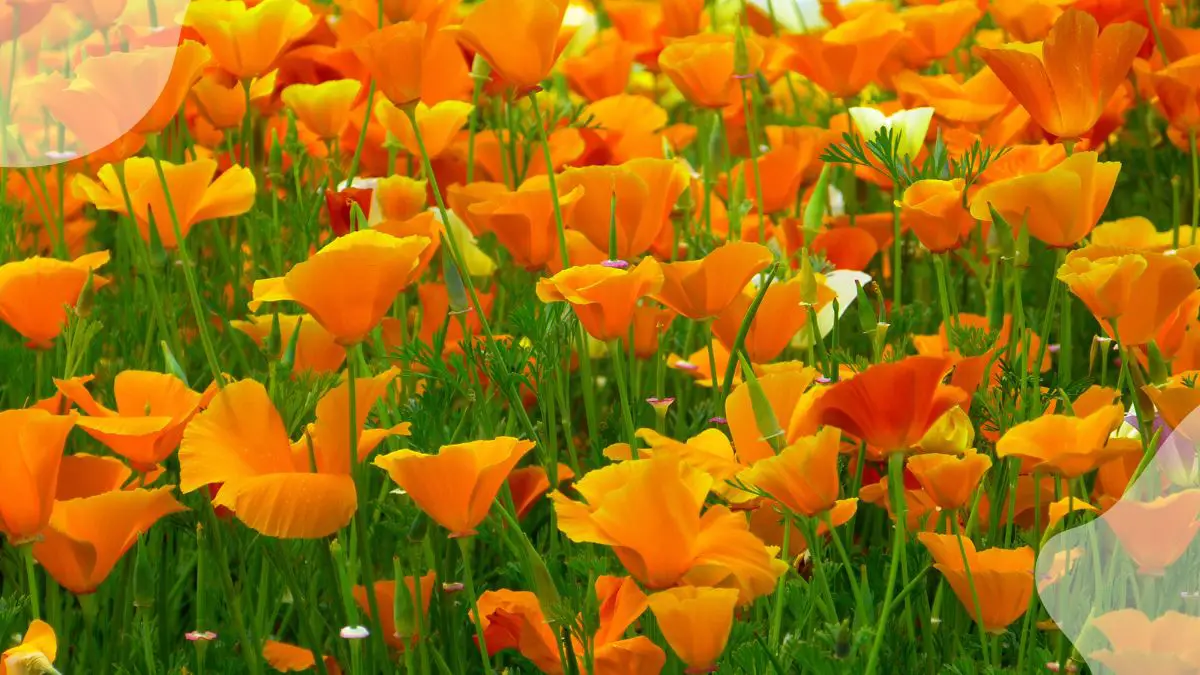Discover the vibrant world of orange floral blooms plants, where beauty meets nature in a stunning display of color and elegance. These plants have a rich historical significance, dating back centuries to ancient civilizations that revered them for their symbolic meanings and medicinal properties. Join us on a journey through the past and present of orange flowers plants, exploring how they have captivated hearts and gardens throughout history.
Key Takeaways
- Plant orange flowers like Marigolds, Zinnias, or Lantanas for a vibrant garden.
- Consider the difference between annuals, like Gazanias, and perennials, such as Daylilies, when planning your garden's longevity.
- Provide special care to orange plants by ensuring they receive adequate sunlight, water, and well-draining soil.
- Incorporate orange blooms, a flower, into your garden design for a pop of color in borders, containers, or hanging baskets.
- Remember to deadhead spent blooms regularly to encourage continuous flowering in your orange plants.
- Experiment with different combinations of orange flowers to create visually appealing and harmonious landscapes.
Types of Orange Flowers
Annual Varieties
Annual orange flowers offer vibrant seasonal displays, perfect for adding a burst of color to your garden. These blooms typically last for one growing season, requiring replanting each year. Some popular annual orange flowers include Marigolds, Zinnias, and Calendula.
- Pros:
- Provide bright colors for seasonal variety
- Easy to grow from seeds or transplants
- Ideal for filling gaps in flower beds or containers
- Cons:
- Require replanting each year
- Limited lifespan compared to perennial varieties
Perennial Varieties
Perennial orange flowers bring long-lasting beauty to your outdoor space, returning year after year without the need for replanting. These blooms establish deep roots and come back stronger with each passing season. Examples of perennial orange flowers include Daylilies, Black-Eyed Susans, and Heleniums.
- Benefits:
- Low maintenance once established
- Continual blooms year after year
- Attract pollinators like bees and butterflies
Bulb-Based Blooms
Bulb-based orange flowers add elegance to your garden with their unique shapes and vibrant hues. Planting bulbs in the fall allows them to establish roots before blooming in the spring or summer. Common bulb-based orange flowers include Tulips, Lilies, and Crocosmias.
- Planting Requirements:
- Plant bulbs at the right depth for optimal growth
- Ensure well-draining soil to prevent rot
- Provide adequate sunlight for healthy development
Vine Flowers
Orange vine flowers create stunning vertical gardens with their climbing nature, perfect for covering walls, trellises, or arbors. These flowers require support structures to climb and thrive in sunny locations with well-draining soil. Popular orange vine flowers include Trumpet Creeper, Honeysuckle, and Climbing Roses.
- Characteristics:
- Climbing habit adds vertical interest
- Requires regular pruning to maintain shape
- Can attract hummingbirds with nectar-rich blooms
Popular Orange Blooms
Lantana Care
Lantana plants are favorite orange flowering plants known for their vibrant blooms. To care for them, ensure they receive ample sunlight and well-draining soil. Prune regularly to promote continuous flowering.
Master the art of caring for Lantana plants by providing them with at least six hours of sunlight daily. These plants thrive in warm climates and require minimal watering once established.
Understand the specific sun exposure needs of Lantana flowers to ensure they bloom to their full potential. Plant them in full sun for the best results, allowing them to showcase their stunning orange petals.
Learn essential tips for maintaining healthy and thriving Lantana plants in your garden. Regular deadheading promotes new growth and ensures a long-lasting display of beautiful orange blooms.
Orange Lily Tips
Orange lilies are striking flowers that add a pop of color to any garden. To grow them successfully, provide well-draining soil and moderate sunlight. These flowers thrive in moist conditions.
Dive into the world of orange lilies and appreciate their unique beauty. Incorporate these flowers into your garden design for a touch of elegance and vibrancy.
Explore the ideal growing conditions and care tips for orange lilies to help them flourish in your garden. Ensure they receive adequate water during the growing season to support healthy growth.
Discover creative ways to incorporate orange lilies into your garden design, such as planting them in clusters or pairing them with complementary colors for a visually appealing landscape.
Butterfly Weed
Butterfly weed plays a crucial role in attracting pollinators like butterflies to your garden. Its bright orange flowers serve as a nectar source for these beneficial insects.
Learn about the significance of butterfly weed in promoting biodiversity in your garden by attracting various pollinators. These plants contribute to the overall health of your garden ecosystem.
Understand the unique features of butterfly weed, including its drought tolerance and ability to thrive in various soil types. Incorporate these plants into your garden to enjoy their vibrant blooms throughout the summer months.
Discover how to cultivate and care for butterfly weed effectively by providing well-drained soil and ample sunlight. These low-maintenance plants are perfect for adding a splash of color to your outdoor space.
Annuals vs Perennials
Key Differences
Orange flowers come in various types, including popular annuals and perennials. Annual orange blooms complete their life cycle within a year, requiring replanting annually. In contrast, perennial orange flowers return each year, offering long-lasting beauty in your garden.
Differentiating between annual and perennial orange flowers is essential for garden planning. Apart from these, there are also bulb-based orange flowers like tulips and daffodils, which bloom from bulbs planted underground. Vine orange blooms, such as trumpet vines, climb and spread across trellises or fences.
Each type of orange flower boasts unique characteristics that distinguish them from one another. Popular annuals like marigolds and zinnias provide vibrant colors for a single season. On the other hand, perennial favorites like daylilies and coneflowers offer enduring beauty year after year.
Care Tips
To ensure healthy orange flowers in your garden, proper care is crucial. Watering is vital for the growth of orange flowers, with most varieties requiring consistent moisture but good drainage to prevent root rot. Sunlight needs vary among different orange flower types, with some thriving in full sun while others prefer partial shade.
Understanding the soil requirements of your orange flowers is essential for their well-being. While some varieties prefer rich, well-draining soil, others can tolerate poorer conditions. Regular fertilization can help boost growth and flowering, especially for annuals that require more nutrients due to their shorter lifespan.
Expert advice on nurturing orange flowers includes regular deadheading to promote continuous blooming and maintaining overall plant health. Pruning may also be necessary for certain varieties to control growth and encourage new blooms. By following these care tips diligently, you can enjoy a garden filled with vibrant orange blooms.
Seasonal Blooms
Different orange flowers exhibit seasonal blooming patterns that vary throughout the year. Understanding these patterns can help you plan your garden effectively to enjoy continuous blooms. Some varieties bloom in spring or summer, while others peak in autumn or winter.
Knowing the best times to plant orange flowers based on their seasonal preferences can maximize your garden's beauty. Planting annuals at the right time ensures a colorful display during their peak blooming season. Perennials, on the other hand, require strategic planting to ensure they return reliably each year.
Seasonal changes impact the growth and flowering of orange plants significantly. Temperature fluctuations, daylight hours, and weather conditions all play a role in influencing when orange flowers bloom and how long their flowering period lasts.
Special Care for Orange Plants
Watering Needs
Orange plants have specific watering requirements based on their variety, ensuring proper growth and health. Avoid overwatering or underwatering to maintain optimal conditions. Watch out for signs of dehydration and overhydration, adjusting watering accordingly.
Sunlight Requirements
Different orange flower species have varying preferences for sunlight to thrive. Providing the right amount of sunlight is crucial for their development. Position your orange plants strategically to receive adequate sunlight throughout the day.
Soil and Fertilizer
Maintaining ideal soil conditions and fertilization practices is essential for the health of orange flowers. Enrich the soil with nutrients to support healthy growth. Utilize fertilizers to enhance the blooming potential of various orange plant varieties.
Design Ideas with Orange Flowers
Garden Themes
Create unique garden themes by incorporating vibrant oranges of orange flowers. Utilize lovely citrus orange blooms as focal points for themed gardens. Incorporate orange ballerina flowers into various garden styles for a cohesive look.
Color Combinations
Pair orange flowers with other hues to create stunning color combinations in your garden. Explore how different colors complement orange blooms for visually appealing displays. Balance colors effectively to enhance the beauty of your garden using vibrant oranges.
Placement Tips
Expert advice on strategic placement of orange flowers can elevate your garden's visual appeal. Create visual interest by placing orange blooms in key locations throughout your garden. Arrange orange flowers strategically to maximize their impact and energy in your outdoor space.
Closing Thoughts
Having explored the diverse array of orange flowers, from types and care tips to design ideas, you now possess a wealth of knowledge to enhance your garden with vibrant blooms. Remember to choose the right plants based on your climate and preference between annuals and perennials. Special care, such as proper watering and sunlight exposure, will ensure your orange flowers thrive. Incorporating these stunning blossoms into your landscaping can bring a pop of color and a touch of elegance to your outdoor space.
Now that you are equipped with the know-how to cultivate and showcase orange flowers in your garden, it's time to roll up your sleeves and get planting! Transform your outdoor oasis into a picturesque haven bursting with the beauty of orange blooms. Share your floral creations with fellow gardening enthusiasts and continue to expand your botanical expertise.
Frequently Asked Questions
What are some popular types of orange flowers?
e popular types of orange flowers include marigolds, zinnias, lantanas, and daylilies. These vibrant blooms add a splash of color to any garden or landscape.
How do I differentiate between annual and perennial orange plants?
Annual orange plants complete their life cycle in one season, while perennials regrow each year. Understanding this difference helps you choose the right plants based on your garden's needs and maintenance preferences.
What special care do orange plants require?
Orange plants thrive in well-draining soil, ample sunlight, and regular watering. Pruning faded blooms encourages new growth, while fertilizing during the growing season promotes healthy flowering.
Can orange flowers be used in design ideas for landscaping?
Yes, orange flowers can be incorporated into various design ideas for landscaping. They add warmth, vibrancy, and contrast to garden beds, borders, containers, and floral arrangements.
How can I create an eye-catching design with orange flowers?
To create an eye-catching design with orange flowers, consider using complementary colors like purple or blue for a striking visual impact. Mixing different shades of orange can also add depth and interest to your floral displays.
Image Source: Paid image from CANVA




